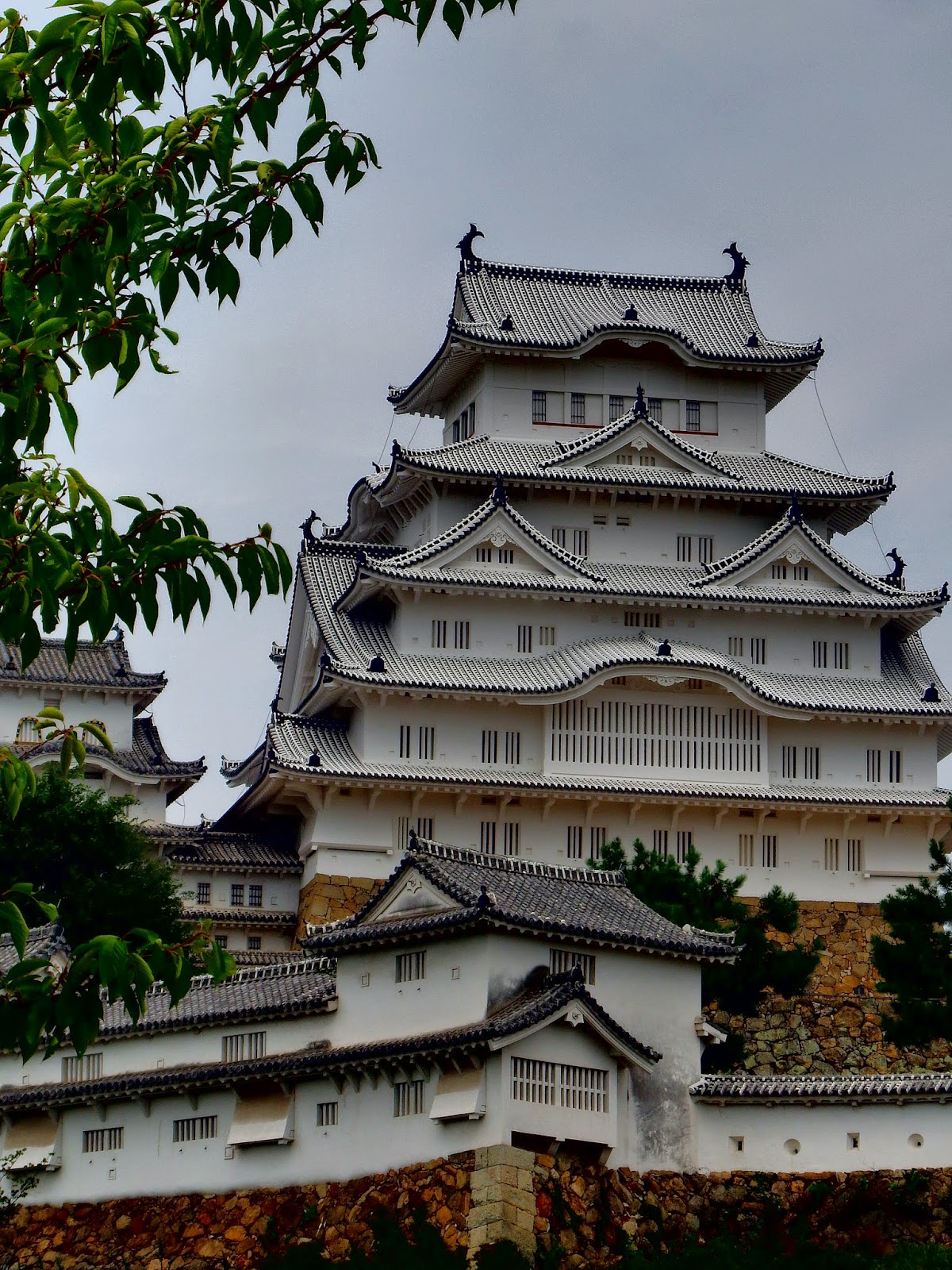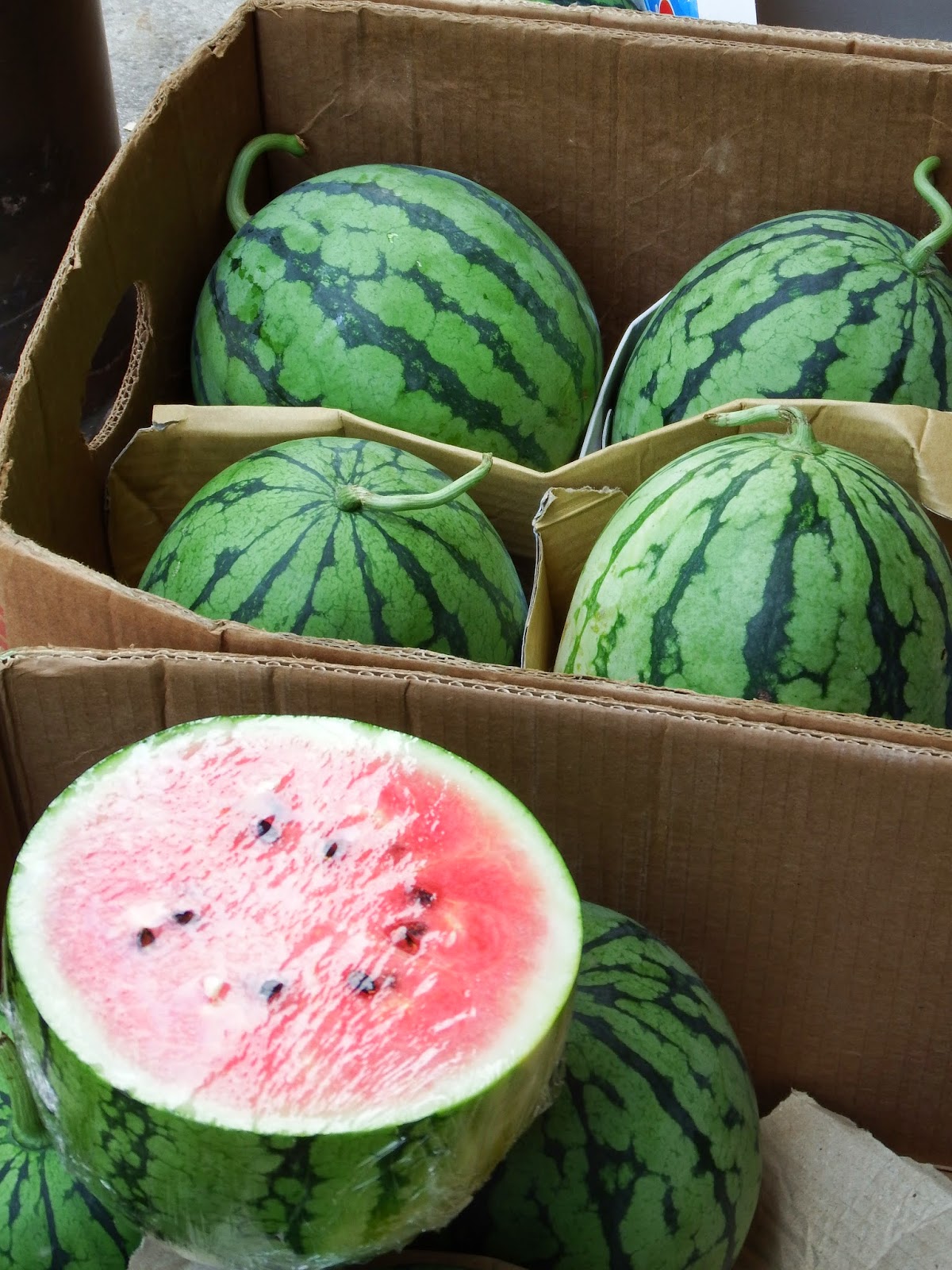By
Wednesday, we’d accomplished all we were going to in Sasebo. The rest is up to
us as individuals to get back there and do a little more snooping. As of right
now, I’m planning on going back in late March during an interim period. I want
to go down to the 99 Islands and check out what I can of the Army Base there
and do basically the same thing (get rejected at the gate and spend a couple
days rooting through museums and libraries).
So
off we went back north…west…Japan’s on a funny angle, so my United States
oriented brain can’t get used to the idea of things not being directly on a
North-South-East-West gridwork. Regardless, we were going back to Kyoto, but
had to make a stop first.
We
weren’t prepared for what we found in Himeji. Not just a beautiful and historic
piece of architecture (though that really doesn’t do “White Egret Castle”
justice. Just look at that name: “White Egret Castle.” Damn.) but something
much more special. But I’ll get to that in a minute.
We
arrived in Himeji on a humid Wednesday late morning. We were still playing
poker with the weather, reading the signs and holding our breath. It was
starting to rain and look sort of dour as we left Sasebo, but every time we
emerged from another tunnel in another town, the weather was different. Cloudy
here, sunshine there, hell frozen over, etc.
Himeji,
at least, was keeping it together and by the time we left the station and found
some lockers to stow all our gear, the skies had cleared and we had a nice
scorching sunny morning to work with.
Himeji
Castle doesn’t feel like it has anything to hide. It’s right out there in the
open. You can see it from the station platform, actually. It says, “Yes, here I
am. Come at me, tourist bros.” You walk up the main road past myriad arcades
(seriously, the number of shopping and eating arcades in southern Japan is
insane! Kitakami: what happened, man?) and along a nicely tree-lined sidewalk
decorated here and there with the requisite naked statues. Dad was determined
to point out every town’s collection of naked chicks.
He’s
not wrong: there is a collection of sculptures by a particular artist who must
have had some sort of fascination with the nubile female form. But finally, finally in Himeji, I found a naked man.
I
sort of wish I hadn’t. Why do all the female statues look like Audrey Hepburn
and the one guy is John Belushi playing the trumpet?
Anyway,
when you finally cross the street and approach the outer gate of Himeji Castle,
the scale hits you. The biggest part of the complex isn’t the castle itself,
it’s actually the sprawling complex within the walls! From the outer moat,
writhing with fat black koi, to the zoo at the back of the grounds and the
botanical gardens just next door, it’s a huge property! It feels very palacey.
With everyone milling around the large grassy area, it looked a bit like the
National Mall…only a lot nicer, given the Mall’s current state.
The
only thing that was missing from the general atmosphere were the royal garments
and it would have been like stepping back in time. Unfortunately, the Main Keep
is getting some major cosmetic surgery. Dad’s theory is that everything is
getting a face lift in preparation for the 2020 Olympics.
For
those planning on coming to Japan in the future, save yourself the hassle and
come either the year before or after the Olympics when everything is newly
restored and pristine!
Nevertheless,
we were able to see a lot of the castle! The longest tour is self-guided and
takes you through the long enclosed building just inside the main wall. Inside,
as you pad around in your stocking feet, you can see the small arrow slits that
were the elegant and discreetly bloody original home security system. You can
walk into the small rooms that would have been apartments for retainers and
lower-level guests.
 One
of my favorite things about Japan is the architecture. They have the same
cookie-cutter homes today as we have in America: when real estate is at a
premium, fast-built and easily maintained houses are just better economics. But
way back when things like Himeji were being built, a lot of care and attention
went into designing a building to be “organic.” With the close relationship
that the Japanese retain with nature, they show that respect in the
architecture. The wooden floorboards, worn soft and smooth by use, feel like
silk on your feet. Your own body is dwarfed by the natural size and even the
naturally curving shape of wooden
beams and pillars! Tatami mats and washi screens give a softer more natural and
soothing light to a room.
One
of my favorite things about Japan is the architecture. They have the same
cookie-cutter homes today as we have in America: when real estate is at a
premium, fast-built and easily maintained houses are just better economics. But
way back when things like Himeji were being built, a lot of care and attention
went into designing a building to be “organic.” With the close relationship
that the Japanese retain with nature, they show that respect in the
architecture. The wooden floorboards, worn soft and smooth by use, feel like
silk on your feet. Your own body is dwarfed by the natural size and even the
naturally curving shape of wooden
beams and pillars! Tatami mats and washi screens give a softer more natural and
soothing light to a room.
If
I were to compare it, I’d say walking through this labyrinthine hall and its
rooms was like being in the greatest and most comfortable treehouse in the
world. And I wanted to live there!
Now,
what nobody tells you about Himeji Castle is the resident princess, Princess
Sen. And it’s a shame, really, because her life was a beautiful, melodramatic
story of rescues, perseverance, love and loss. No, really!
Rescued
from another castle, she married the prince of Himeji castle, Honda Tadamasa’s
son. The prince and princess lived happily and had two children together.
However, she lived apart from her own family. They were situated in the middle
of feudal battlegrounds, so every day, the very devout princess prayed for them
on a hill behind the castle complex.
Sadly,
those first two children were her only ones. She miscarried several times and
eventually the grief was too much for her and she shaved her head and went into
a religious seclusion.
 There’s
also a fairly decent ghost story about Himeji. In a courtyard in the shadow of
the Main Keep, there is an old well. Many years ago, a maidservant overheard an
assassination plot against her master. Before she was able to deliver the
message and save his life, she was found out and falsely accused of stealing a
valuable plate. She was executed and thrown into the well. For a while, people
swore they could hear her ghost counting money thrown into the water behind
her.
There’s
also a fairly decent ghost story about Himeji. In a courtyard in the shadow of
the Main Keep, there is an old well. Many years ago, a maidservant overheard an
assassination plot against her master. Before she was able to deliver the
message and save his life, she was found out and falsely accused of stealing a
valuable plate. She was executed and thrown into the well. For a while, people
swore they could hear her ghost counting money thrown into the water behind
her.
Eventually,
her body was removed and put to rest. So her spirit no longer counts in the
dead of night, but still, visitors to the well throw in small offerings. Maybe
they want to see if she’ll come back and count again.
Our
next stop was next door at the botanical gardens. My family loves a good garden
and Japan has many. The Himeji gardens have beautifully themed gardens within
one large wall. There are moss gardens and water gardens, trees, bamboo, small
springs and a beautiful tea houses. The most photographed part is a tea house that
looks out on a fish pond with small waterfalls and some stone footbridges.
Himeji peeks out through the tops of the pine trees in the background while the
foreground is full of sparkling koi, orange, white, gold, calico and
blue-black.
 We
walked through the gardens until we went through a gate and found ourselves
facing two alleys. We took the left-most and immediately came across another
gate leading directly to the cha-niwa, or tea house. It’s a discreet little
building and quietly set aside from the rest of the world. This far into the
gardens, you don’t even hear the traffic or people outside.
We
walked through the gardens until we went through a gate and found ourselves
facing two alleys. We took the left-most and immediately came across another
gate leading directly to the cha-niwa, or tea house. It’s a discreet little
building and quietly set aside from the rest of the world. This far into the
gardens, you don’t even hear the traffic or people outside.
We
went inside and removed our shoes. For 500 yen, we were motioned through a
series of low doorways and small tatami rooms. When we reached the back of the
cha-niwa, there was a room about 4 ½ tatami mats large (the standard tea room
size). Traditionally, old tea houses in their entirety were 4 ½ mats! Against
the far wall was the beauty alcove with a long scroll of handwritten
calligraphy. Against the adjacent wall, a woman was kneeling on the floor in
full kimono, facing away from us, preparing tea for the guests already in the
room. The room has two shoji screen walls that open onto a wrap-around porch,
enclosed by sliding glass doors. Just beyond, a beautiful and simple garden
with a few immaculate bushes and trees and nothing else.
Mom
and I knelt on the floor. Because Dad is a manly man of manly manliness, he was
offered a low chair to sit on.
Then,
the tea ceremony began. I could hardly believe it. Last year, FK taught me the
proper way to accept tea at a ceremony. But thus far, I hadn’t been lucky
enough to actually experience a ceremony. And while this was a more casual,
simplified version, I could barely contain myself, I was so excited!
First,
an older woman in a pale green kimono served us each a small tea cake of mochi
and white bean paste on a tiny plate. First, we used our tiny, two-tined
“forks” to eat the mochi cake. Then, she returned with our chawan tea bowls.
When
you think of English tea, images of fine china and delicate little cups with
graceful handles come to mind. Japanese chawan are much larger, thicker, and
they have no handles. They’re meant to be held in the palm of your hand and are
designed with a pattern on one side. When you’re served the thick, foamy green
tea, the pattern faces you. You pick the bowl up with your right hand and hold
it in your left palm.
Then,
with your right hand, you give it two quarter turns until the pattern faces
away. Then you drink in just a couple large sips. Don’t sit there and try to
sniff out “notes” or admire the froth. Tea ceremony is about the ceremony, not
the tea…though the tea has a grassy deliciousness to it.
Once
you drain your tea, turn the pattern back to you and place it on the tatami mat
and say “thank you” to the host.
I
was just so happy to briefly be in another world where women in pale green
summer kimono float around on tatami while guests look out the window at the
little garden in admiration.
























































